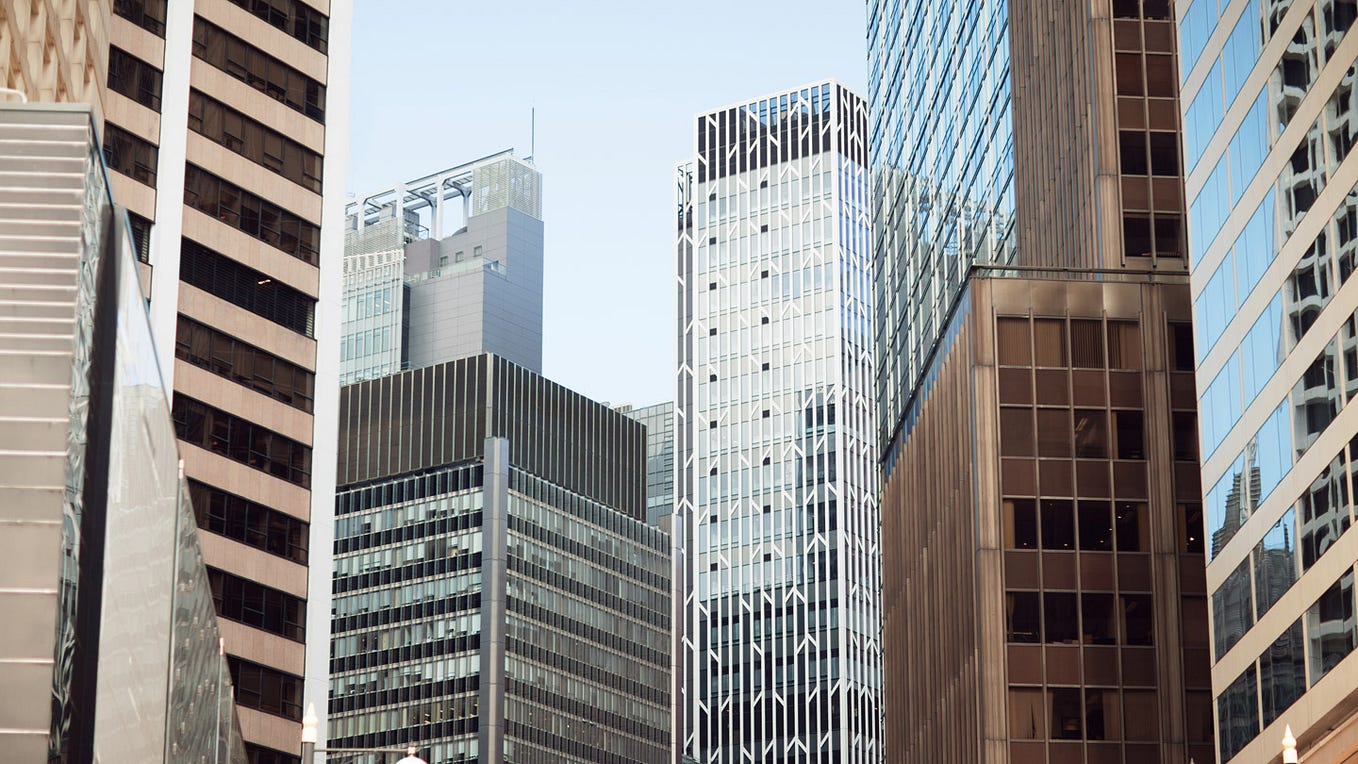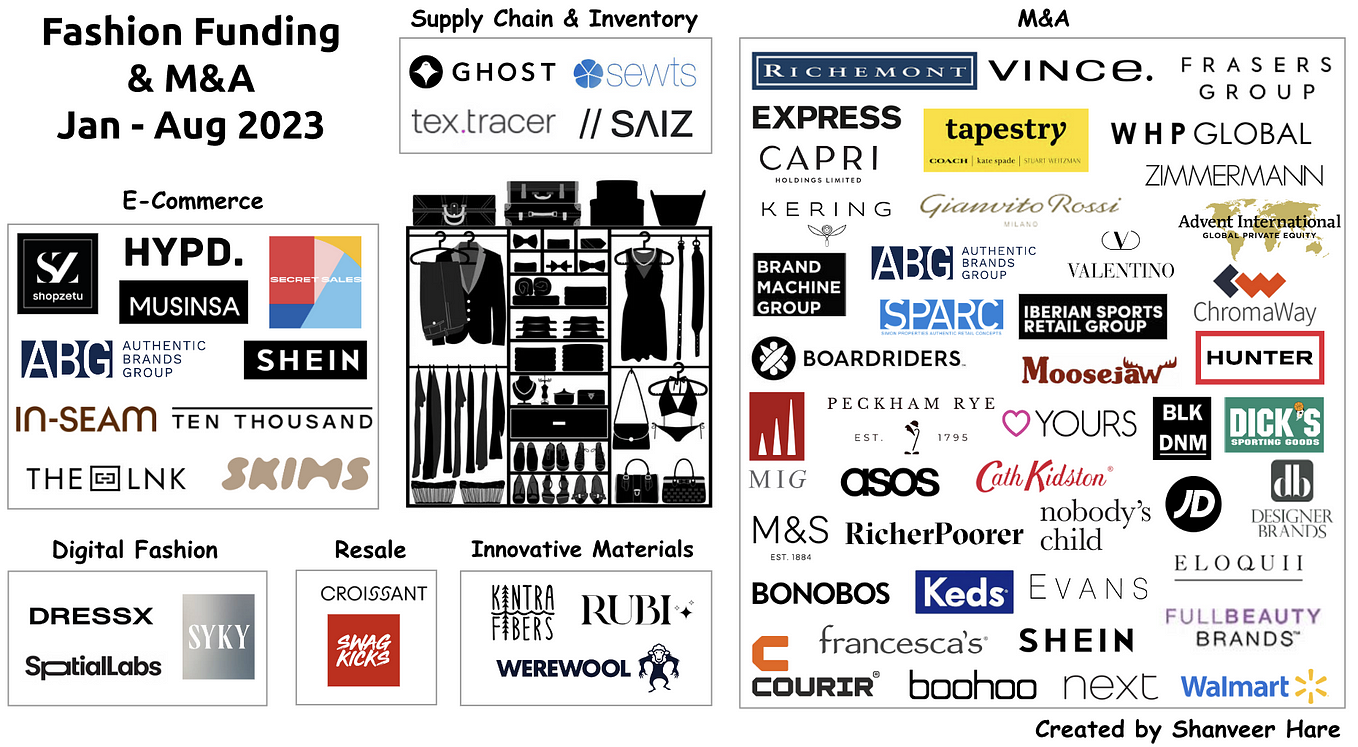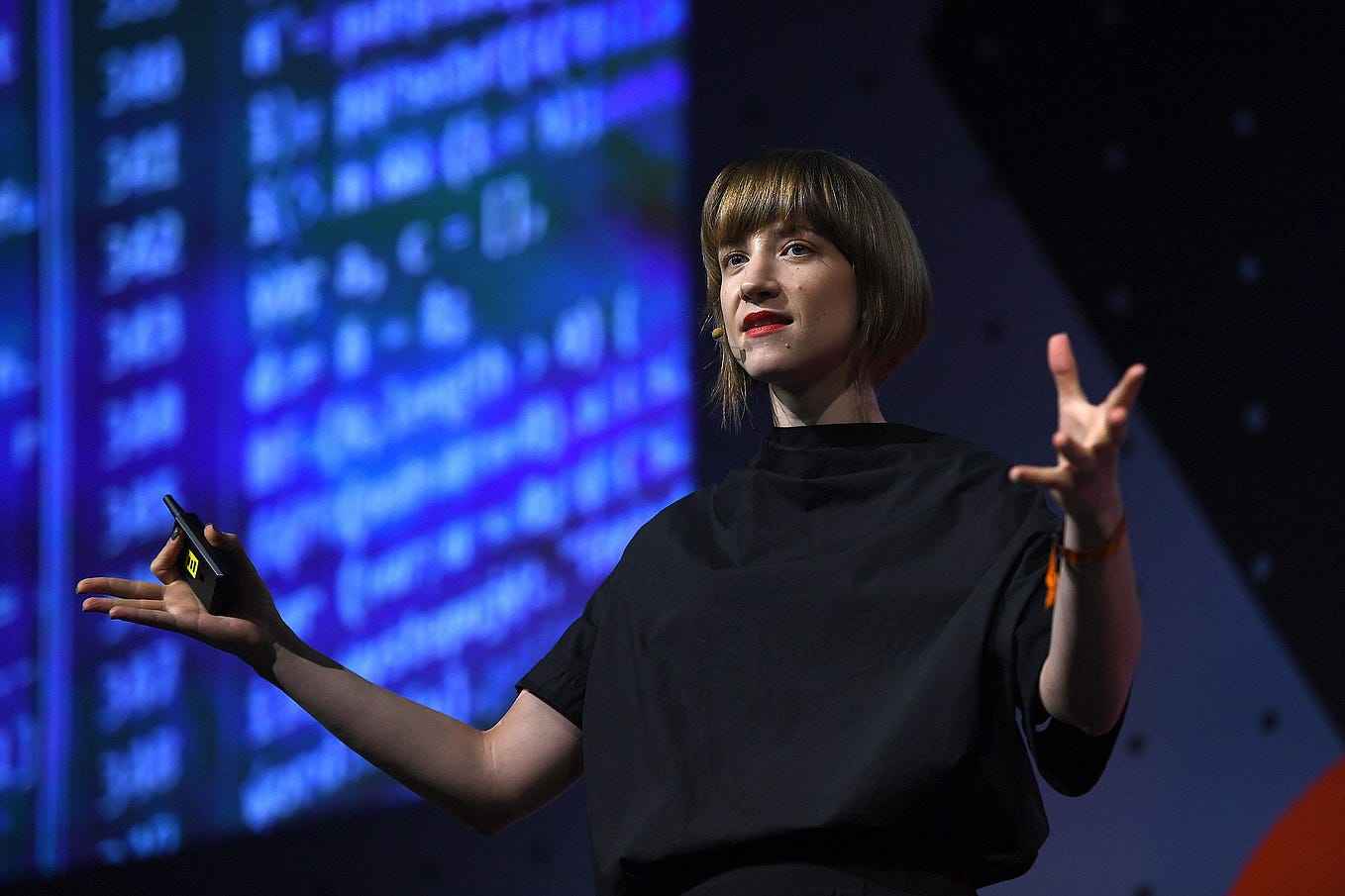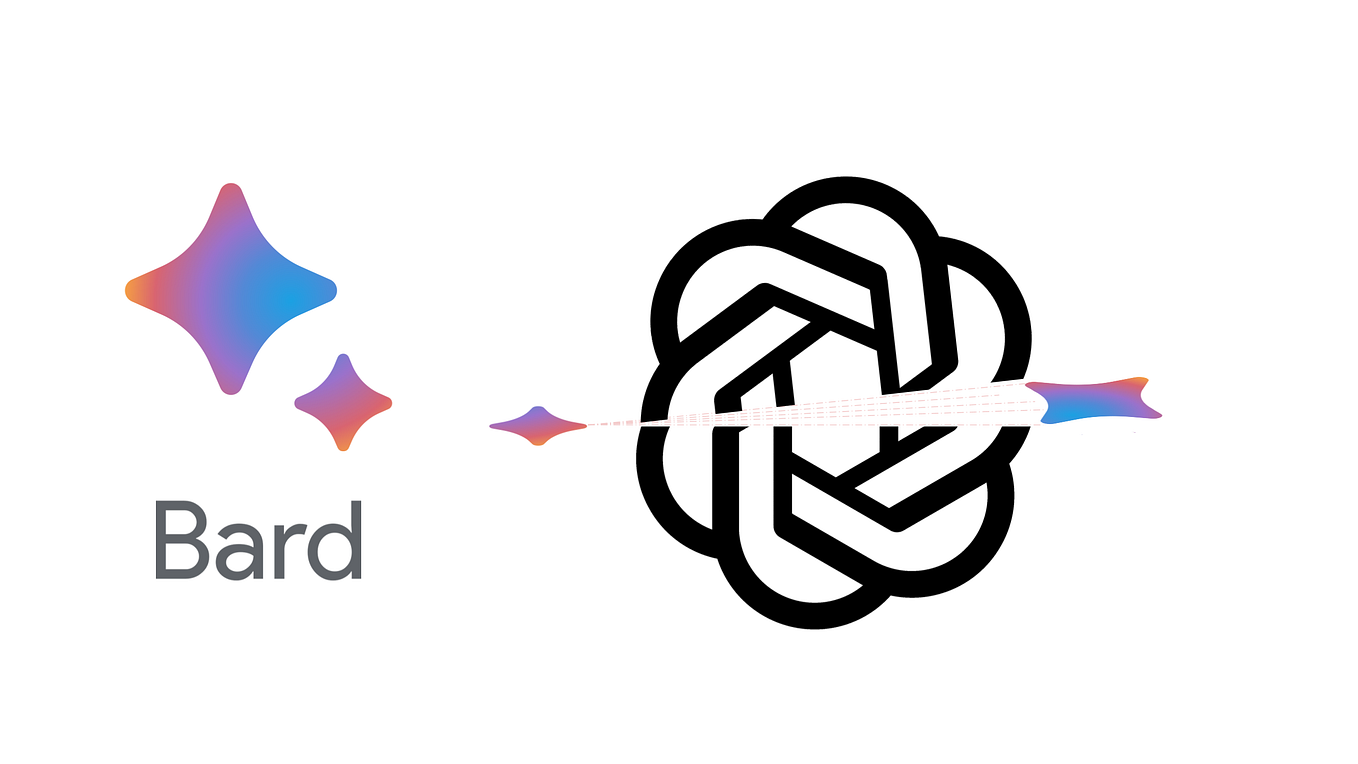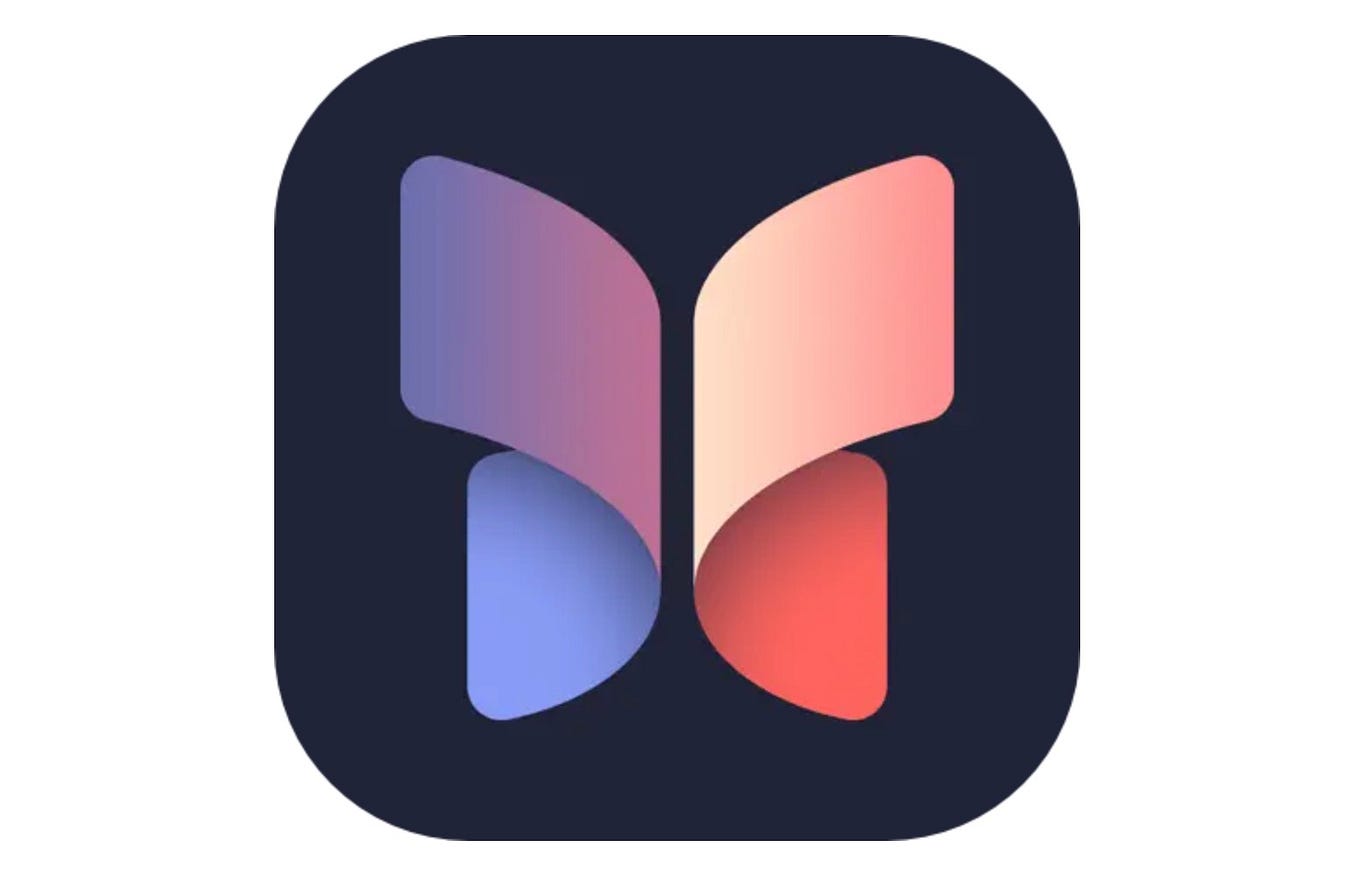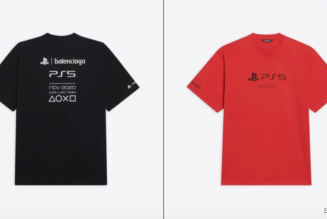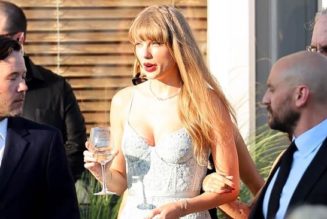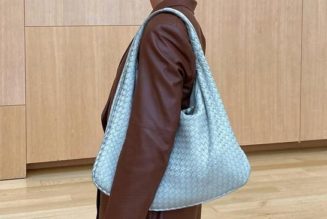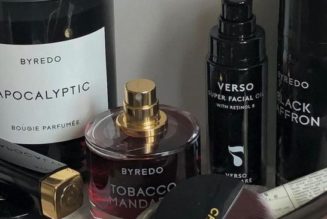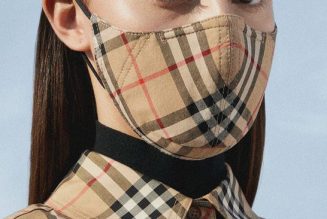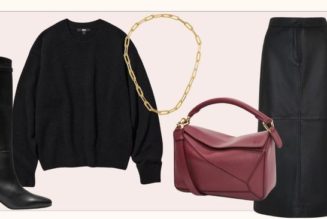Oct 12
—
If you read my first post, you’re probably raising an eyebrow right now and questioning how I’ve gone from writing about syndicated loans to fashion.
I grew up surrounded by fashion. My mother started off as a machinist constructing garments in a factory, put herself back into education, and and transitioned into the creative world of pattern cutting, grading, and designing.
Over the course of her career, and especially in the past 3 years, I’ve seen an incredible transformation in how technology has developed this sector, changing the way clothes are designed, produced, and distributed.
I want to provide a snapshot of the exciting developments going on in this sector, focusing on luxury fashion.
There is an incredible art behind the creation of each design and garment, and I truly believe that technology has the ability to revive how consumers appreciate, interact with, and acquire luxury items for the better. Fast fashion, after all, is so last season.
Market Overview
The fashion industry is a powerful one. Sure, globally we all wear clothes, but more than that, it is a form of self-expression. Fashion has the power to make people feel a certain way. Daily stylistic choices can be used to elevate our mood, increase our confidence, and live a more authentic life. It therefore comes as no surprise that the market is one of the largest industries in the world, estimated to be worth more than $3 trillion by the end of the decade.
Breaking it down, as of 2023 the luxury apparel market is worth $103.35 billion and is expected to grow to $142 billion by 2028, at a CAGR of 6.56%. In June 2023, the STOXX Europe Luxury 10 Index had risen by 22.81%, after reaching an all-time high in April. Even during economic downturns luxury brands continue to show resilience and growth.
Although buying expensive non-essential items during a downturn seems illogical, consumers in this sector are people with high incomes poised to weather a recession. Hefty price tags can be rationalised as investments in long-lasting and quality items, or even items that may grow in value. Take the classic Chanel bag for example, these have continued to go up in price and some are now collector’s items.
The New Luxury Paradigm for Fashion
Historically, luxury fashion has been characterised by quality, exclusivity, and unparalleled customer service. Products are made from high-quality materials and superior craftsmanship. The idea of luxury combines product attributes, creativity, and brand image.
This classic concept has been enough to satisfy purchasers in the past, but there has been a shift in how buyers view the luxury paradigm.
Consumers are increasingly also seeking customised and engaging experiences that will not only make their lives easier, but also make them feel special or intrigued, and additionally align with their inner values. Not asking for much, right?
Consumer Trends: The Changing Face of Luxury
As the luxury landscape evolves, there are several consumer trends luxury fashion houses are keeping top of mind to develop their growth strategies. If executed well, these can strengthen customer loyalty and lead to repeat business, impacting a company’s bottom line.
Let’s delve into a couple of these:
1) The Rise of E-commerce for Luxury
30% of all luxury sales are expected to take place online by 2025. Consumers no longer need to physically travel to a location to purchase luxury products. For consumers, online markets provide convenience and accessibility. They want online options in addition to physical stores.
For brands, online markets create a new means of product discovery and delivery. They provide additional touchpoints to drive traffic with target audiences to generate additional revenue streams. E-commerce also has the added benefit of providing valuable data and insights into buyer’s preferences, enabling companies to refine product development and marketing strategies.
Luxury brands have traditionally shied away from e-commerce. There’s been a fear that it would dilute a brand’s image and reduce exclusivity. The pandemic was key in shifting this attitude and highlighting the value of a digital marketplace. It provided a way to continue connecting with clients through authentic storytelling leading to stronger, long-term relationships.
2) More than a Purchase, an Experience
Luxury shoppers are increasingly expecting experiential luxury. This entails a seamless end-to-end client service with distinctive moments attached to a purchase. Gone are the days of passive shopping. Consumers want one-of-a-kind experiences that create emotional moments or are worthy of being put on social media.
In response to this, luxury brands have been curating intimate and exclusive moments. From exclusive boutiques to special dinners to high-touch concierge services, these experiences help forge relationships and loyalty, contributing to incremental spending. The digital realm has also provided new opportunities to engage with and reward a brand’s most loyal clients.
3) Keeping up with Gen Z and Gen Alpha
By 2025, Gen Z is expected to account for 1 out of 5 luxury purchases. Gen Z has grown up with technology. Most have tablets and smartphones. It shapes the way they see and interact with the world.
Gen Z consumers have also started to buy luxury items 3–5 years earlier than millennials did (at 15 vs. at 18–20). The appeal of luxury brands to ever-younger consumers is tied to a surge in wealth creation over the past few years, along with social media.
By 2030, Gen Z and Gen Alpha’s spending is set to grow three times faster than older generations, making up a third of the market. Gen Alpha has been raised on responsive technologies that no longer ask them to passively consume information. They use platforms like TikTok and Roblox from a young age. They’re active online co-creators.
Luxury brands are employing strategies to better understand the motivations of Gen Z and Gen Alpha. They recognise that they are critical growth levers for the luxury fashion sector. As the largest generation of future consumers, they will need to be factored into long-term business planning. They will strongly influence how fast and deep the luxury market evolves.
4) The Future Looks Greener: Eco-conscious Luxury
Consumers are increasingly aware of the social and environmental impact of their clothing choices. 67% of consumers now take into account the concept of sustainability when making a purchasing decision. Whether that’s buying from sustainably-focused labels, opting to rent outfits instead of buying a new one, or selling old pieces and buying secondhand, purchasers are choosing to pursue luxury brands that resonate with their personal values as well as aesthetics.
Much like e-commerce which luxury initially shunned — sustainability is a subject that isn’t going to go away. The growing concern for sustainability in luxury fashion is a testament to the evolving values of modern consumers. 73% of millennials were willing to spend more on a product if it came from a sustainable or socially conscious brand. Brands that understand and pivot towards more sustainable models are not only appealing to the current generation but also setting a precedent for the luxury fashion landscape of tomorrow.
The Seeds of Technology Revolutionising Luxury Fashion
In recent years, luxury brands have begun to rewrite the story of who they are, what they stand for, and how they appeal to the modern consumer. At the heart of this change is their acknowledgment that consumers are important in influencing and shaping products and campaigns.
They have embraced technology as a tool to meet consumer needs in a way that wouldn’t have been predicted, and the results have been exciting.
Let’s dive into a couple of areas that have changed and will continue to change the luxury fashion landscape:
1) AR, VR, NFTs and the Metaverse: A Parallel New World of Opportunities
Immersive digital showrooms where buyers can explore runway collections, virtually try on clothes, and even attend fashion shows without being physically present — that’s the stuff people are hungry for.
Luxury brands are using technology to give consumers richer, unique experiences where they can engage with products in a realistic and immersive manner.
They say numbers don’t lie and here’s why these luxury brands are giving this area some serious consideration: 30% of the estimated $110bn spent on virtual goods in 2021 went towards virtual fashion, trading in non-fungible tokens (NFTs) totaled over $17.7 billion in 2021– a 21,000% spike, and 2.5 billion people are currently active in the virtual world. Analysts anticipate that the market for virtual luxury goods could reach $50 billion by 2030.
The opportunity is clear — brands have the ability to give consumers a new way of interacting with them, enhance loyalty, and generate new revenues.
So how are brands trying to take advantage of these new technologies?
The Metaverse
Physical and digital worlds are merging. While the Metaverse doesn’t have a single definition, it can broadly be defined as an ecosystem of technologies providing for new concepts, experiences, products, places, and interactive environments.
The potential of the Metaverse lies in the consumers of the future, Gen Z and Gen Alpha, who are increasingly interested in buying digital goods.
Many luxury brands have delved into the Metaverse to reinvent the way consumers experience fashion using digital spaces and offer much more than just a piece of clothing. Take Balenciaga for example, who collaborated with Epic Games to launch the video game Afterworld: The Age of Tomorrow, in which the Fall-Winter 2021 collection was presented. Players were able to purchase virtual outfits and accessories for avatars throughout the game.
The Metaverse Fashion Week, hosted by the virtual reality platform Decentraland for the past two years is another development facilitating luxury fashion brands like D&G and Elie Saab. It provides a new forum for fashion houses to showcase their collections.
The four-day period hosts a series of digital runway shows, afterparties, and pop-up shops featuring digital garments and avatar models. Users are able to scan QR codes to view an item, before using funds in their crypto wallet to purchase items as NFTs. The purchased NFTs can then be worn on the user’s avatar, or in some cases traded for the physical version of the item.
Augmented reality (AR) and Virtual reality (VR)
AR is a technology that adds a digital overlay to our existing physical environment. VR is a technology that immerses you into a new world, typically done through a headset. They offer several opportunities both inside and outside of the metaverse.
Virtual Try-On: A Personalized Fitting Room — Virtual try-on tools and AR applications allow customers to try on garments virtually, visualising how an outfit would look and fit without physically trying it on. This not only eliminates uncertainties in sizing but also adds an element of interactivity and entertainment to the shopping journey.
Gucci, for example, launched an AR app called “Try-On” that allows users to virtually try on its sneakers using their smartphones. This enhances the online shopping experience by enabling customers to see how the shoes look on their feet before making a purchase.
Prada has also been an early adopter of AR technology. In 2021 it utilised Snapchat’s hands-free try-on allowing people to see how various Prada purses look at the swipe of a hand.
Enhancing In-Store Experiences — AR is also redefining the traditional brick-and-mortar shopping experience. In-store AR applications can provide customers with additional information about products and showcase hidden features. This fusion of physical and digital creates an engaging and informative journey that aligns seamlessly with luxury fashion’s emphasis on exclusivity and detail.
In 2020, Burberry collaborated with Tencent to build a WeChat mini-app allowing customers to unlock discounts and new avatars whilst in store. Through it, they could also scan QR codes to get details on outfits, book automated trial rooms, and win rewards exclusively designed for them.
NFTs
One popular way luxury fashion has translated the digital experience into revenue has been through NFTs. These are unique digital assets that use blockchain technology to establish ownership and authenticity.
Luxury brands are utilising NFTs to create limited-edition digital fashion pieces, turning them into valuable collector’s items. These digital garments not only showcase intricate design but also offer buyers a sense of ownership in the digital world and often offer additional unique benefits like access to future events.
Part of the essence of luxury fashion lies in its exclusivity and rarity. NFTs provide an innovative way to replicate these principles in the digital realm. By minting limited-edition digital fashion items as NFTs, brands can ensure that each piece cannot be duplicated. This digitised scarcity resonates with the high-end client that values owning something one-off and bespoke.
D&G first propelled NFTs into the limelight in 2021 through Collezione Genesi, selling five NFTs that were accompanied by custom physical pieces and four strictly digital NFTs. In collaboration with luxury marketplace UNXD, the collection sold out for a shocking $6 million.
The numbers speak for themselves: in 2022 D&G earned a generous $23.68 million in revenue through NFT sales. That’s a new stream of revenue the company wouldn’t have otherwise generated.
There have been several other luxury fashion houses who have also leaned into the NFT movement as they’ve realised the opportunity to tap into new streams of revenue and markets are endless.
Here are a few examples:
- Balmain released three NFTs as part of the Balmain X Barbie collection. It featured Barbie and Ken avatars wearing different looks from the collection. Each NFT came equipped with a bespoke set of doll-sized Balmain pieces.
- Louis Vuitton created thirty hidden collectible NFTs which were available after completing “Louis the Game”. The game featured Louis Vuitton’s customizable figurine “Vivienne” through her journey across 200 virtual worlds.
- Jimmy Choo in collaboration with Eric Haze released an NFT piece. The NFT auction winner also received a physical hand-painted pair of sneakers. 8,888 mystery boxes were also available for purchase with varying categories of scarcity and possibilities of future privileges.
NFTs bridge between the physical world and digital worlds. Objects can now exist in the metaverse and the real world, linked through technology. They function as an immutable representation of authenticity and ownership in both realms.
In time, peoples’ digital possessions may be more valuable than their physical possessions, both emotionally and financially. A digital version of Gucci’s Dionysus Bag with Bee sold for $4,115 in Roblox’s virtual world, significantly more than the physical bag which sells for $3,400. While it wasn’t an NFT, it shows where this space could be headed.
2. Artificial Intelligence (AI) + Generative AI = An Evolution of Capabilities to Assist Luxury Fashion
AI
With algorithms becoming more powerful by the day, AI has changed how quickly brands can respond to evolving consumer demands.
Fashion houses recognise the value of being able to consume and interpret large amounts of data efficiently and accurately. AI continues to contribute to a number of areas:
Personalisation
We’ve all experienced that moment when a website seems to know us better than we know ourselves. AI has been a game changer in developing personalised experiences. Algorithms can analyse customer data to understand preferences, predict behaviour, and create tailored recommendations. This level of personalisation enables a brand to enhance a consumer’s shopping experience and increase customer engagement.
Prada, for example, has strengthened its partnership with Adobe this March to elevate customer experience across all digital and physical offerings. Through Adobe’s real-time customer data platform and journey optimiser, Prada expects to gain deeper insights into clients’ buying behaviours which will allow them to deliver more customised experiences. In the words of Lorenzo Bertelli, marketing director and head of CSR at Prada Group, “this will ensure we are able to engage and connect with each customer in the right place, at the right time, and with the right content.”
Enhanced User Experience
User experience is a critical aspect of any luxury brands digital presence. It starts from the moment a potential customer engages with a brand, and continues long after they’ve made a purchase. AI-driven UX designs provide a seamless and intuitive experience that aligns with the expectations of a high-end consumer.
Today, AI-powered chatbots can provide tailored customer support across several channels like a brand’s platform or an email. They are able to answer queries and offer recommendations in real-time. These services elevate the overall user experience by reducing customer service wait times and response times.
Burberry, for example, initially launched an AI-powered chatbot to allow consumers to go behind the scenes of their September 2016 collections. It then extended the functionality to offer a range of services, including the ability to ask product-specific queries, speak live with a consultant and keep updated with Burberry’s latest news.
Sustainability
It’s no secret that the fashion industry is one of the most polluting sectors in the world, contributing up to an estimated 10% of CO2 emissions and 20% of global wastewater.
Enhanced data analytics offer retailers detailed snapshots of customer preferences and buying patterns. This valuable information allows fashion houses to predict trends and adjust their production processes and supply chain management in response to popular items. AI-driven data analysis can help brands make informed decisions, optimise their operations and reduce their overall environmental footprint.
Stella McCartney, a pioneer in this area, has partnered with Google to develop a tool driven by data analytics and AI. The tool will help brands understand the impact of their supply chains, focusing on areas like traceability in raw material production, which is where much of the environmental impact often takes place.
Generative AI
Generative AI goes one step further than just identifying and classifying information. It can create new content, including audio, text, images, and videos. It has huge potential to boost apparel, fashion, and luxury sectors’ operating profits to $275 billion in the next three to five years. Use cases according to Mckinsey include:
Product Development and Innovation
Generative AI allows creative executives to tap into new sources of inspiration by creating entirely new designs or refining existing ones.
Designers can input sketches and details such as fabric and colour palettes into a platform powered by generative AI to formulate multiple new designs and styles. This can be used as a foundation for a new collection. Generative AI platforms are able to aggregate and perform sentiment analysis from various types of unstructured data like videos on social media to unleash a new wave of creativity.
In 2022, a group of Hong Kong–based fashion designers created more than 80 outfits with the help of AIDA, a generative-AI-supported software. Cala, Designovel, and Fashable also provide similar offerings for designers to tap into the power of generative AI.
We also saw the launch of AI Fashion Week this year, a competition showcasing the latest advancements in AI and fashion. The platform looks to encourage designers globally to experiment with new technologies and techniques.
Marketing
Producing valued marketing content is partly a numbers game. To stay top of mind with consumers, requires consistent and frequent campaigns to boost brand awareness.
Fashion marketing executives can utilise generative AI to produce strategic marketing content based on unstructured data from consumer profiles and community insights.
CopyAI, Jasper AI, and Writesonic are some of the startups powered by generative AI allowing marketers to accelerate content development and reduce creative blocks for in-house marketing teams.
Marketers are able to define the type of content they want to create and include parameters of what they’re looking for, who their target audience is, and the tone in which they want the marketing communication to be in. Despite this enormous potential, marketers will still need to refine and edit the content produced to ensure it aligns with their brand’s vision and messaging.
Luxury brands like Moncler, Zegna, and Valentino have already taken their first steps to use AI technology for their campaigns this year. Valentino’s campaign in January, for example, married AI’s capabilities with human creativity to unveil its new “Essential” line of luxury staples. The brand shot its entire collection through artificial intelligence as a way of exploring the relationship between AI and fashion, pushing the boundaries of a new hybrid world.
Sales and Consumer Experience
I outlined the benefits of AI chatbots above. Generative-AI powered chatbots can go a step further in assessing a customer’s feedback from various unstructured sources like email requests, product ratings, and online posts to identify trends and tailor recommendations to a consumer. Generative AI provides a new opportunity for hyper-personalisation and microtargeting.
Kering levelled up this year by introducing “Madeline,” an AI-powered personal shopper that leverages OpenAI’s ChatGPT to support a range of its brands, including Gucci, Bottega Veneta, Alexander McQueen, and Balenciaga.
Madeline goes beyond merely suggesting products. It provides additional information about fabric details, product origin, and care instructions. In an age where consumers want greater transparency and more information, this has big potential to help customers navigate luxury items and make informed decisions.
Stitch Fix, a personal styling and e-commerce platform is also experimenting with GPT-3 and DALL-E 2, the text-to-image AI generators. These generative models show promise in helping stylists review customer feedback efficiently and identify products customers are more likely to purchase, boosting sales and improving customer satisfaction
Players Redefining the Fashion Landscape
There’s no shortage of innovation and opportunity across the fashion landscape. I’ve mapped out some notable startups in this space that luxury brands and VC investors alike may want to keep an eye on:
These startups are disrupting traditional business models and leveraging new technologies to push boundaries across the fashion life cycle, including creating new sustainable materials to reduce environmental impacts, providing traceability and authentication solutions, and personalising consumer experiences. They offer luxury brands valuable partnership opportunities to advance their customer acquisition and growth strategies.
Venture capital (VC) funding remains an important contributor to fueling this innovation. Some of the most active VCs in this area include:
These VCs are not only injecting crucial capital into startups, but also providing valuable expertise and networks to help companies scale and navigate a highly competitive market. If you’re a startup looking for funding, be sure to check out what stage and geographical location a VC typically invests in. Reviewing their thesis and past portfolio will also give you an insight into which investors are the right fit for you.
Expectations for 2023 and Beyond
Luxury brands are being expected to go beyond just promoting product features or benefits. They must tell a story that resonates with the target audience, reinforcing their desire to belong to a certain community.
Luxury fashion is now about creating a lifestyle that people aspire to be associated with. Technology provides the foundations to adapt to this changing landscape.
Here are my final thoughts on where luxury fashion is headed :
- Collaboration between humans, AI, and generative AI agents will enrich product ideation, marketing, and customer engagement for luxury fashion. Technology won’t replace humans but it will provide professionals with new tools to do certain tasks quicker and more efficiently.
- As more of our time is spent online, digital identities will become increasingly important in the future. Digital fashion will form part of that narrative in allowing us to express our individuality and values.
- There will be greater integration of physical and digital worlds. A phygital reality. Luxury shopping in the future will likely be a combination of what physical stores offer today but with the addition of augmented and virtual features.
- The metaverse aligns with an emerging consumer trend known as experiential luxury, which indulges the senses on multiple levels. The metaverse has huge potential to change how we perceive, experience, and even create fashion. Brands can give consumers a new way of interacting with them. This will offer a new realm of experiential luxury that is not available in the physical world.
- NFTs are no longer just a marketing tactic, they’re contributing to long-term business plans, generating sizable revenues. NFTs have an incredible ability to offer experiences that outweigh conventional loyalty schemes. More physical items are likely to be paired with accompanying NFTs to complement a brand’s offering. This will enable luxury brands to reward clients who engage with their products the most.
Welcome to the future of luxury fashion.
Watch this space for part two of this deep dive where I give a running timeline of fashion M&A and funding from Jan — August 2023. Exits are live and well!
👉🏽 I would love to hear your thoughts on the topics discussed, feel free to connect and reach out on Linkedin.
✨ Stay tuned for more interesting soundbites on startups, emerging technologies, and the venture capital landscape.

